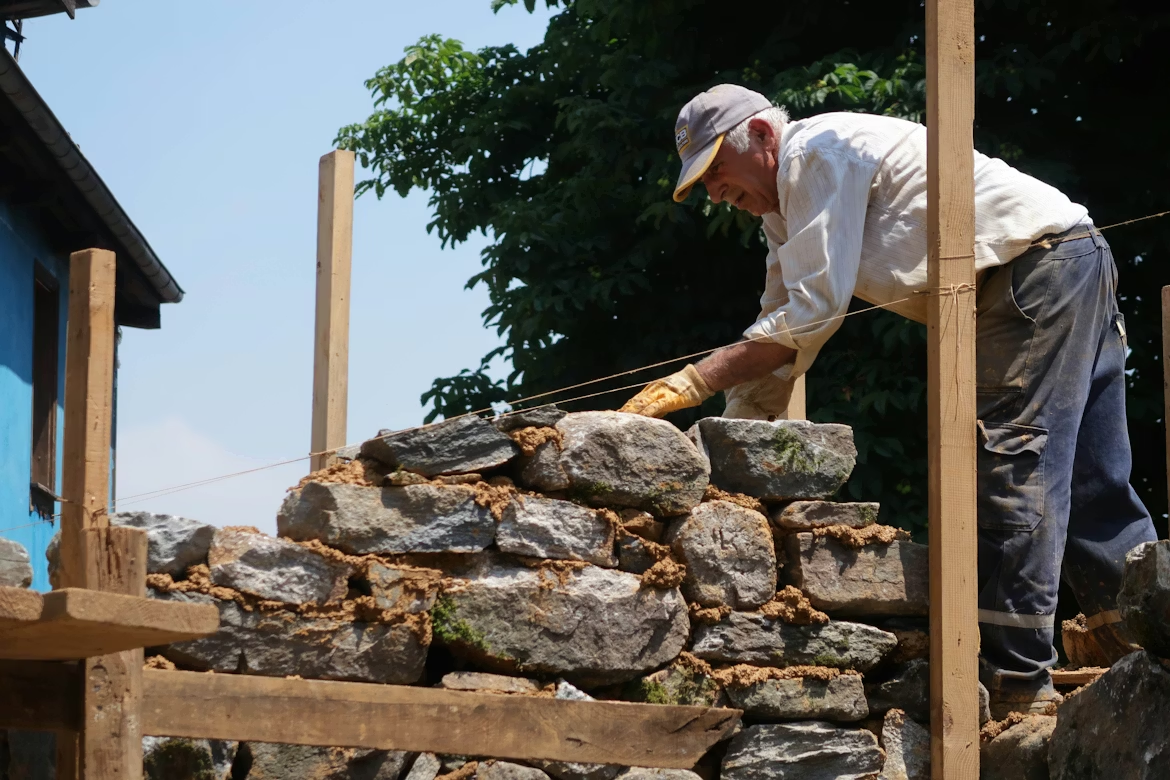As environmental awareness grows, more homeowners and builders are choosing retaining walls construction that protects both the land and the planet. Fortunately, today’s sustainable materials deliver exceptional strength and beauty while dramatically reducing waste, embodied carbon, and pressure on natural resources.
1. Recycled Concrete Sleepers for Zero-Waste Strength
Recycled concrete sleepers are made from crushed demolition concrete mixed with new aggregates, diverting thousands of tonnes of rubble from landfill every year. During retaining walls construction, these sleepers offer the same load-bearing capacity as virgin concrete but with a 60-80 % lower carbon footprint.
Their subtle grey tones and faint aggregate patterns give a modern industrial look that pairs beautifully with native gardens and coastal homes.
2. Reclaimed Hardwood Timber for Warm, Responsible Walls
Salvaged railway sleepers, wharf timbers, and old bridge beams bring rich color and history to retaining walls construction. Properly treated reclaimed hardwood resists termites and decay just as effectively as new treated pine, yet it prevents mature trees from being harvested.
The deep reds and weathered textures create instant character, turning functional walls into heritage-inspired features that only improve with age.
3. Gabion Walls Filled with Site-Cleared Stone and Recycled Glass
Gabions—galvanised steel cages filled with rock—become powerfully eco-friendly when filled with stone cleared from your own excavation or crushed recycled brick and glass. This approach minimises transport emissions and turns waste into art.
The transparent cages reveal colorful glass layers or local river rock, making every wall unique. Correct retaining walls construction with geotextile backing and internal bracing ensures these green walls stand strong for generations.
4. Modular Recycled Plastic and Composite Blocks
Innovative interlocking blocks made from 90-100 % post-consumer plastic (milk bottles, packaging) are now strong enough for walls up to 1.2 metres without reinforcement.
These lightweight systems speed up retaining walls construction, require no mortar, and never rot or leach chemicals. Available in earth tones or charcoal, they blend discreetly into bush settings while keeping millions of plastic items out of oceans and landfills.
5. Living Retaining Walls with Hempcrete and Native Planting Pockets
For ultimate sustainability, some retaining walls construction now incorporates hempcrete blocks or panels—made from hemp hurd, lime, and water. These carbon-sequestering units are planted with native grasses, lomandra, and grevillea that cascade over the wall, cooling the surface and supporting local wildlife.
The combination of biogenic materials and living plants can make the finished wall carbon-negative over its lifetime while creating lush vertical gardens on previously barren slopes.
Final Thoughts
Eco-friendly retaining walls construction proves that structural necessity and environmental responsibility can work together beautifully. Whether you choose recycled concrete sleepers, reclaimed timber, site-sourced gabions, plastic blocks, or living hempcrete systems, every sustainable choice reduces landfill waste, lowers embodied carbon, and preserves natural resources—without compromising safety or style.
By selecting these materials for your next project, you create a wall that not only holds the earth but helps heal it, delivering lasting value for your property and the planet alike, ensuring long-term stability and promoting greener building practices for future generations.




